Tackling underrepresentation of women in media
Trying something new can be a daunting experience, especially when nobody has done it before.
The residents of Mardan district in Khyber Pakhtunkhwa (KP) province in Pakistan have never been asked about their media consumption habits, particularly not its female residents who make up 50 per cent or roughly 1.15 million.
A new Thomson Media project, ‘Valley Voices’, sets out to change that with its local partner, the Tribal News Network (TNN), a community production centre based in Peshawar.
Women remain an underserved audience in Pakistan, partly due to existing patriarchic structures which hinder or prevent women from expressing their views freely and, as a result, taking up professions such as journalism. There are, for example, no female reporters working in the whole of Mardan district.
Given that men might be hindered by social convention to interview women, this will ultimately result in women's voices being excluded from public discourse. This is why three women were trained to collect data in the field. Their experiences ranged from scorching temperatures to suspicious interviewees.
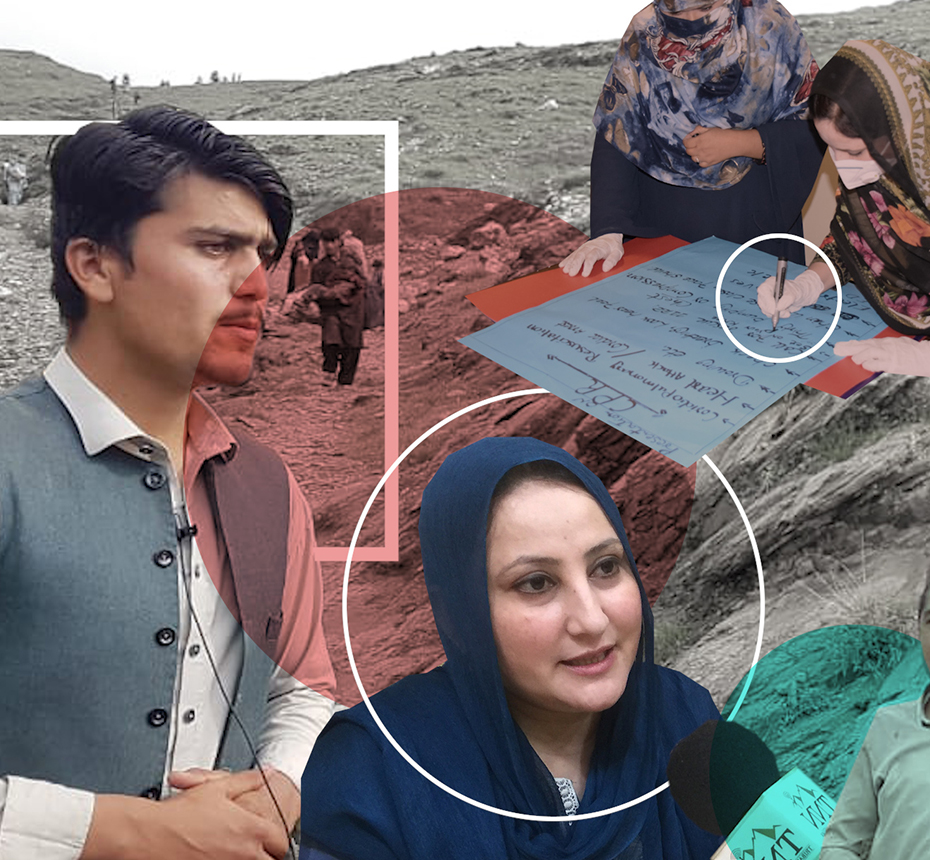
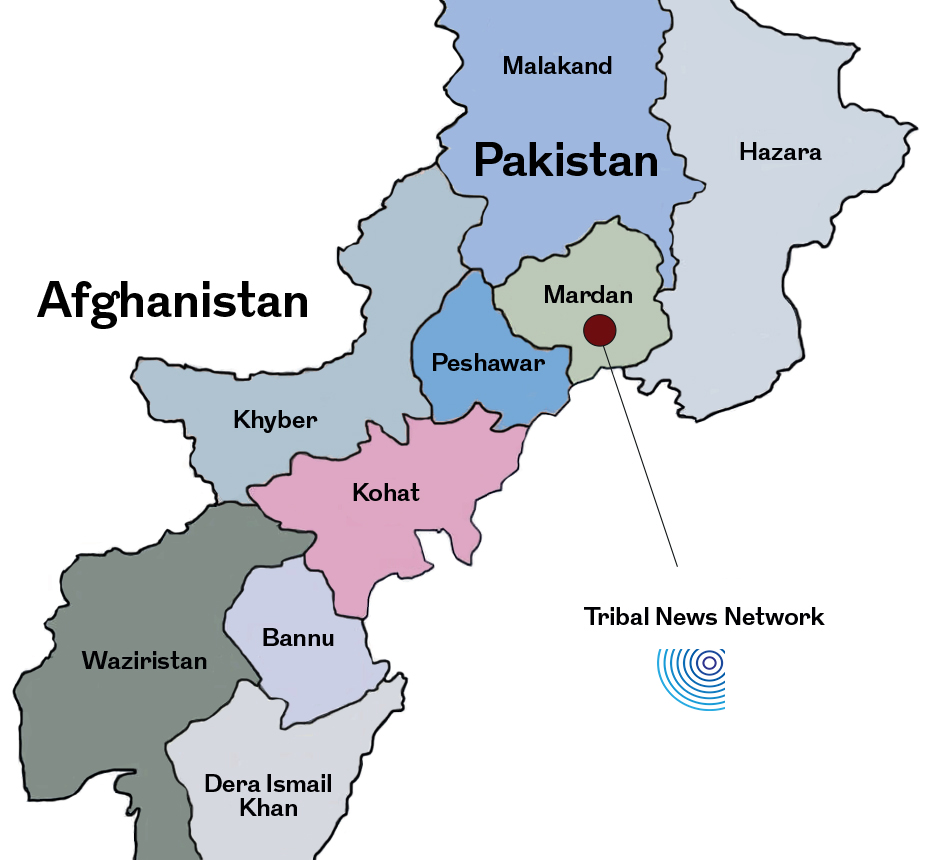
There should be programmes for women, by the women and about the women.
Reasons to focus on Mardan
The district of Mardan is one of the more populous in KP province, which is divided into 35 districts. From September 2020 onwards, it will also be home to TNN’s new radio station.
TNN has been at the forefront of involving women in the production of news to increase consumption of female audiences. The audience research was intended to find out about women’s consumption patterns; their answers were to have a decisive influence on the content of the new broadcasting schedule for Mardan Radio.
The district of Mardan is administratively subdivided into five tehsils. Research was conducted in three of them (Mardan, Takhtbai and Katlang), with 386 women being interviewed from 23 July to 6 August, 2020.
A clear majority of the women, that’s 61.1 per cent, were housewives. This was followed by unemployed women who formed 27.7 per cent of the total sample size.
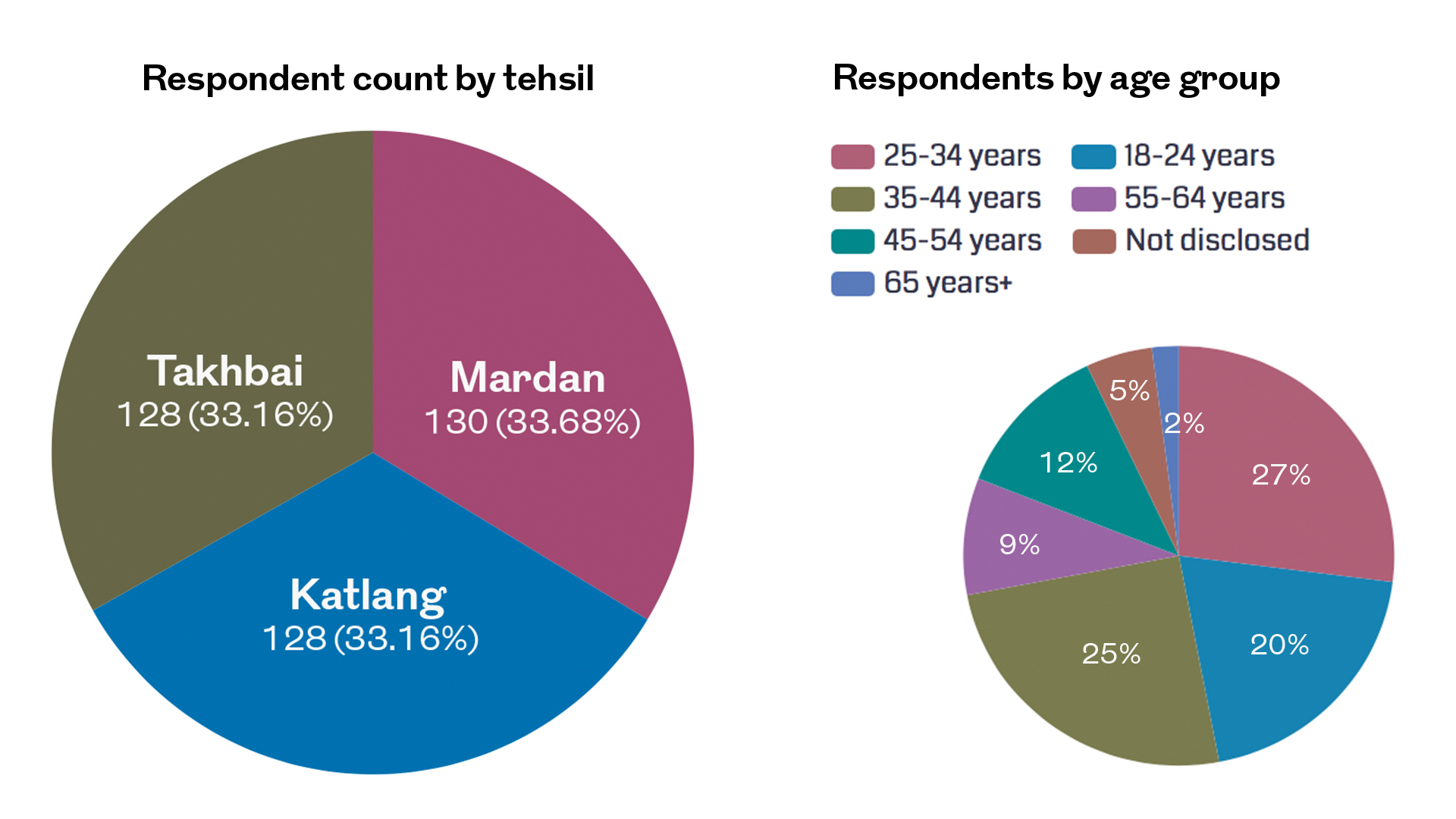
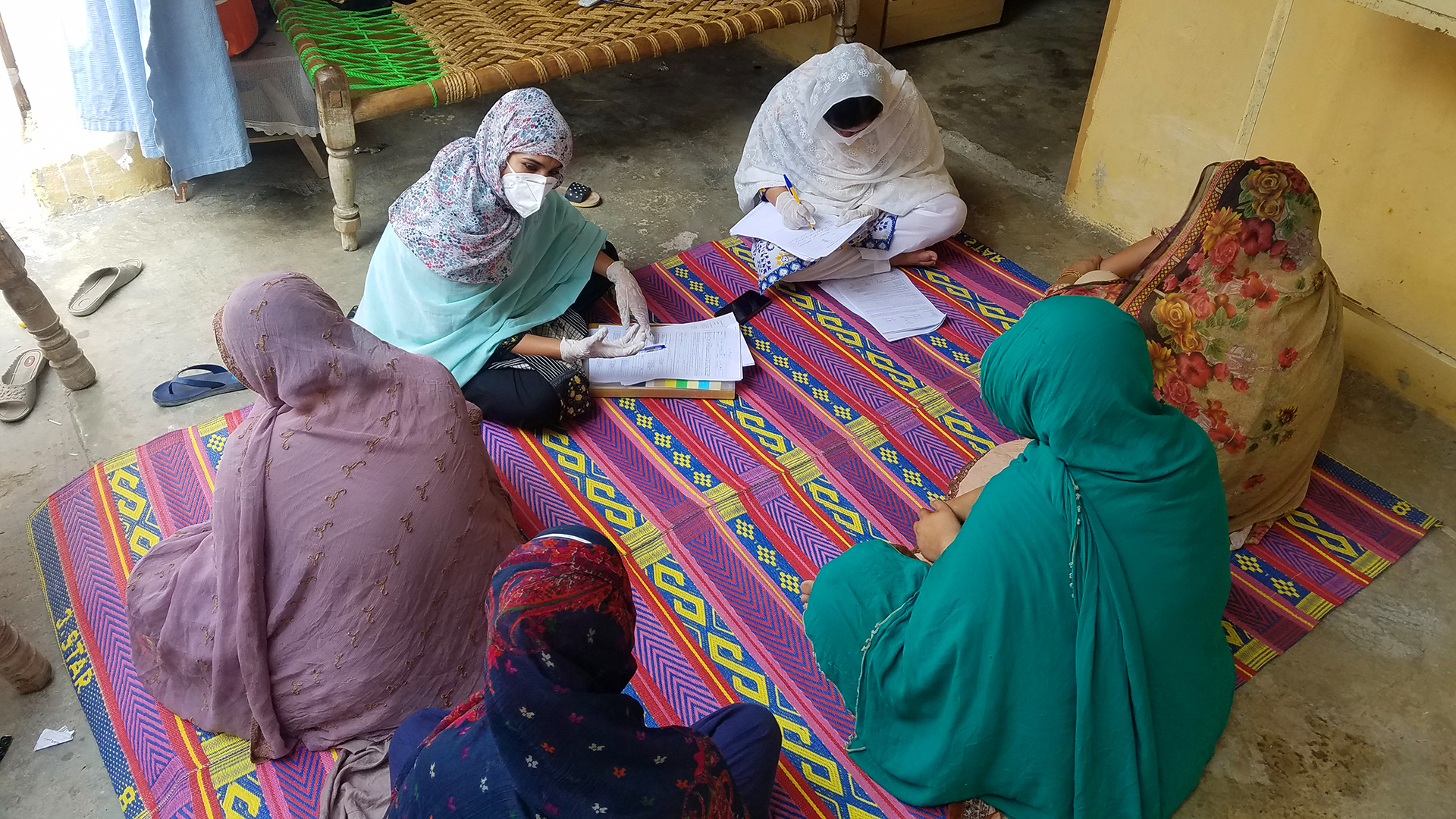
Literacy levels and media consumption
Approximately half of the children in Mardan are not enrolled in any schooling system, according to school construction and rehabilitation programme, Hamqadam, and “female literacy is at a measly 18.38 per cent only,” it claims.
This was mirrored by this study where nearly 85 per cent of women responded that their level of education was at 8th grade or lower. From this, 42 per cent couldn't read or write, 25 per cent were educated up to 8th grade only and 18 per cent stopped education at primary level.
These figures are likely to be worse in other districts, as Mardan ranks among the top three educated districts in KP province. It is, therefore, not surprising that radio (45 per cent) remains the number one source for women to get information, especially for those who are illiterate (67 per cent), followed by television (25 per cent) and social media (16 per cent).
An interesting observation could be made for social media. On average 15.67 per cent of the younger generations, between the ages of 18 and 44, use social media as a source of information, whereas figures for 55-64 aged women and above stand at 20 per cent and 29 per cent, respectively. This is largely due to cultural constraints: young women are not allowed to use social media freely. Affordability is another factor, especially for the unemployed who depend on their parents to buy data packages.
Radio is a daily companion for a clear majority of respondents with 59 per cent listening to the radio every day and 18 per cent tuning in every other day.
Among housewives, the unemployed and those in the 25-34 age group, the most popular time slot to listen to the radio was from 9pm to late.
Many respondents appreciated the informative nature of radio with a clear majority in tehsil Katlang (63 per cent) saying they listened for information. This was echoed in the remaining two tehsils of Mardan and Takhtbai, where the majority of the respondents (46 per cent and 40 per cent, respectively) stated that they listened to be kept informed.
Across all tehsils, three programme types proved most popular. Music shows came first with 18.6 per cent, ranking highest in Katlang (39 per cent). This was followed by religious programmes with 18 per cent, favoured most in Takhbai (38 per cent), and then talk shows with 16.7 per cent, which topped the list in Mardan (36 per cent).
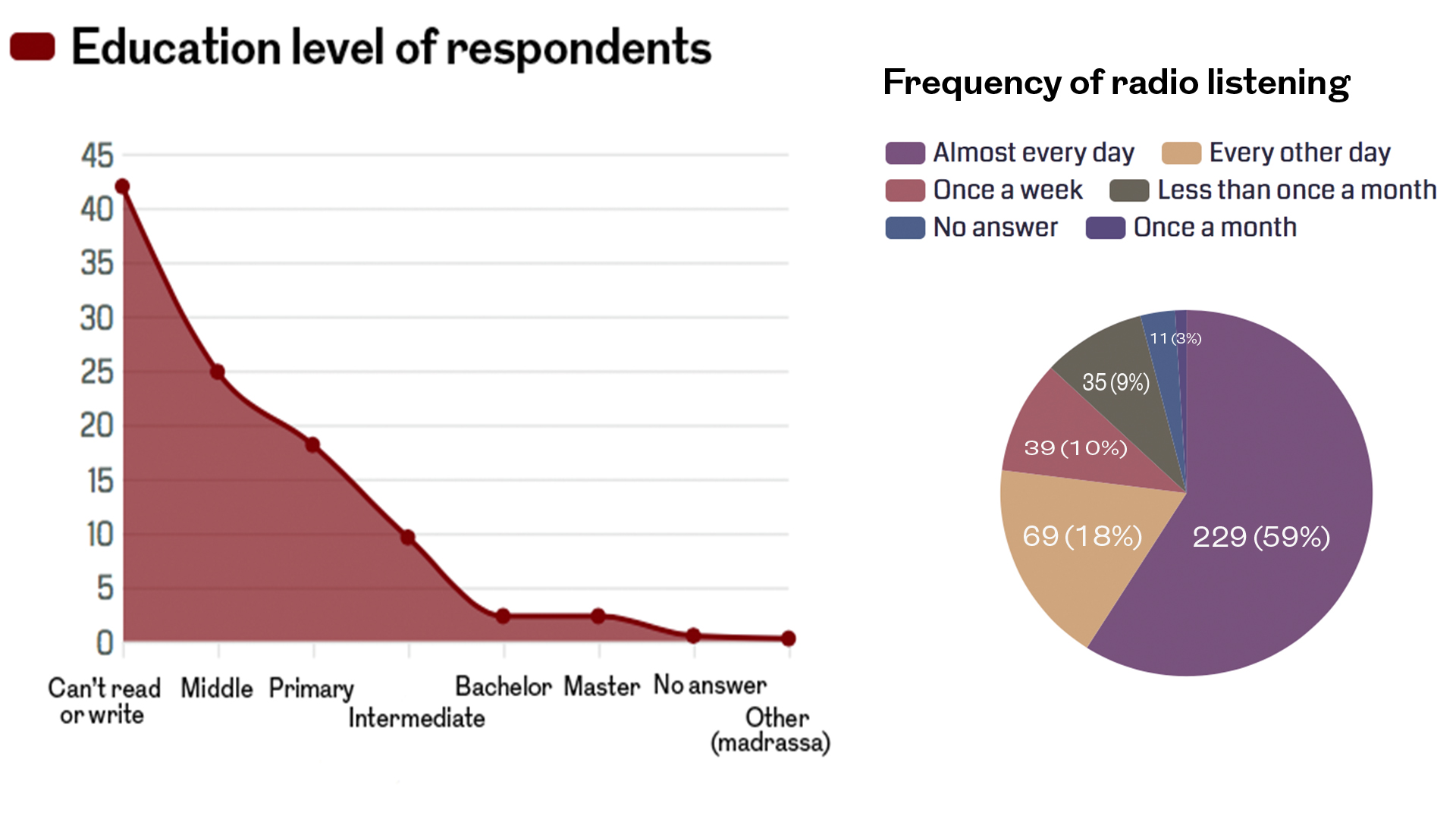
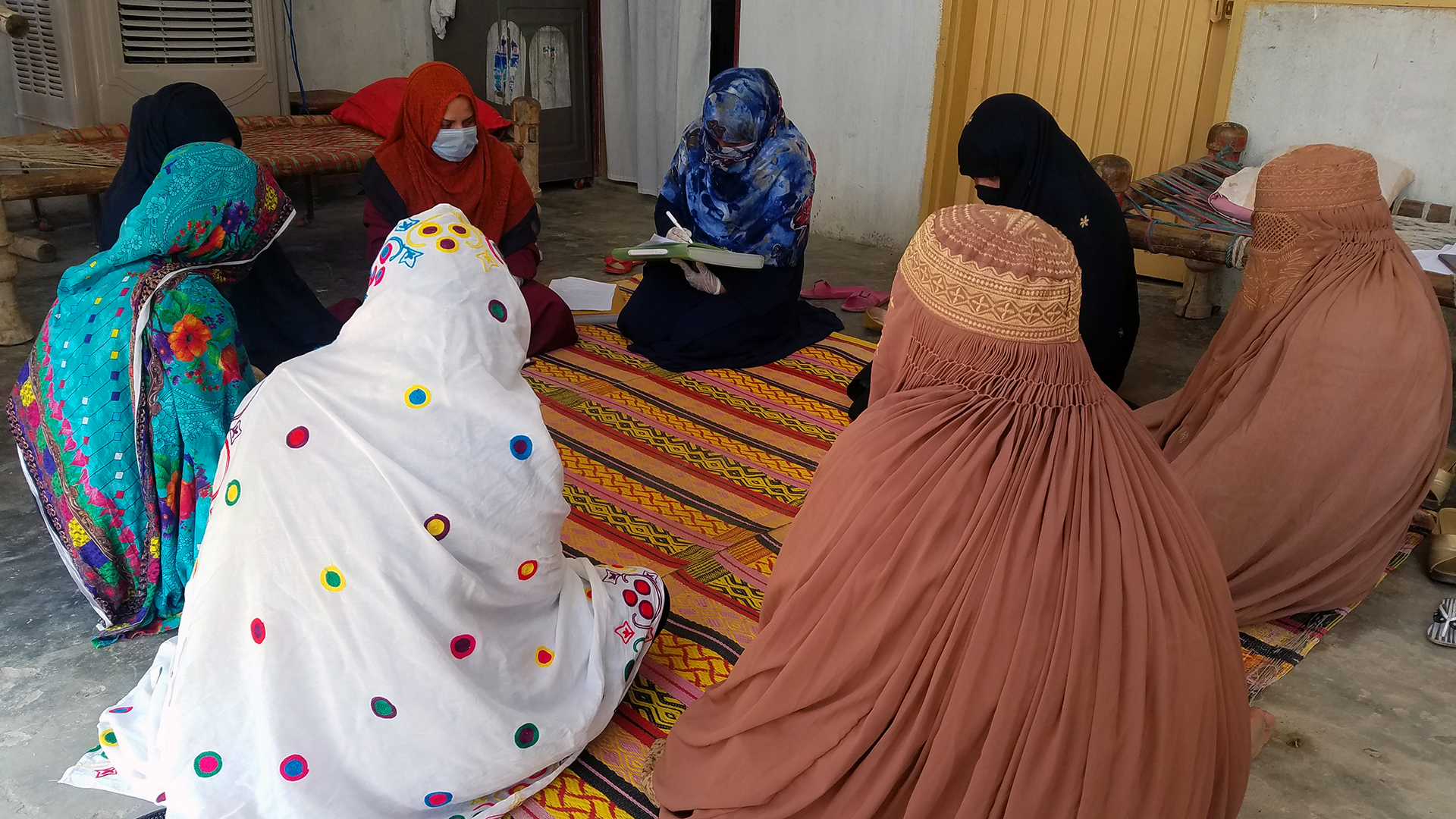
Participation of women
TNN has been among the first and few organisations so far to understand the needs and benefits of recruiting, training and promoting women reporters and editors to gain access to stories from women told by women.
Unsurprisingly, women from all backgrounds welcomed increased women participation and around 18 per cent said they wanted to see more women as presenters. Women feel more at ease talking to other women, particularly in regard to health concerns.
When asked whether sufficient radio programming for women existed, some 62 per cent of respondents said yes, 32.7 per cent said no, and 21.7 per cent said they didn't know. These numbers are in contrast to the free-form comments received.
“There should be programmes for women, by the women and about the women. Women listeners will participate in these types of programmes,” said one respondent. “There is not a single programme that has been designed especially for women and from which they get encouragement,” was the open answer provided by another.
What happens next
Divergence is not unusual, especially in the case of new experiences. It is inevitable that people are either unwilling or unable to provide accurate accounts of their habits and interests, which is why conducting audience research should be a continue process and not a one-off.
Together with TNN and Thomson Media’s international experts, the results will help shape content ideas for the new radio station in Mardan. Existing formats that were planned to be broadcast in Mardan might also be revised and modified based on the preferences revealed by audiences in that district.
For TNN, this research is just the beginning of an ongoing dialogue with its audiences – both women and men – located in Mardan.
About the project
The project 'Valley Voices – Enhancing political participation of women in the former Federally Administered Tribal Areas (FATA) in Pakistan's Khyber Pakhtunkhwa province through local media engagement' – is working towards breaking with prevalent social conventions and hierarchical structures in order to support women with little to no access to formal education to be an active part of public life.
Women represent roughly 50 per cent of the population but still lag behind men when it comes to literacy levels according to a recent study by the United Nations Development Programme (UNDP). Even though overall literacy levels have increased, female literacy in Pakistan stands at 51.8 per cent compared to 72.5 per cent for men.
Thomson Media’s experts are working closely with both the management and editorial teams of its local project partner, the Tribal News Network (TNN), to develop new radio broadcasting and online formats with and for women.
Find out more about the project here.